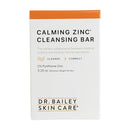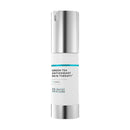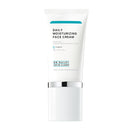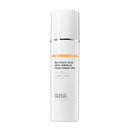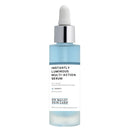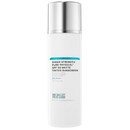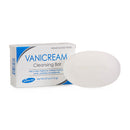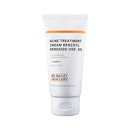How to Detect Breast Cancer Yourself

It is important for women to know how to detect breast cancer yourself. I know that if I had not done a self breast exam, I would have died from aggressive breast cancer. In between mammograms and doctor visits, it's up to us to monitor our breasts for new growths. I found my tumor between annual mammograms and it saved my life.
I found the aggressive cancerous growth in my breast while doing my own self breast-exam.
Every month, for years, standing in the shower, or laying down during my evening bath, I would follow the guidelines below for doing a good, self breast-exam. I’ve done this exam about once a month since I was in my mid 20s when I learned how important it was during my studies in medical school.
 In June of 2013, at the age of 55, I found a very small, but very hard, lump. It wasn’t like the many cysts and other lumps that have had sent me to my doctor’s office before. This one was different. It lay against a rib on the lower part of my left breast. It was the size of a small pea – and a very unfamiliar, new lump. I think it was easier to feel because it was so close to my rib when my breast tissue splayed sideways against my chest wall. I know that this helped me to find the cancer when it was really small.
In June of 2013, at the age of 55, I found a very small, but very hard, lump. It wasn’t like the many cysts and other lumps that have had sent me to my doctor’s office before. This one was different. It lay against a rib on the lower part of my left breast. It was the size of a small pea – and a very unfamiliar, new lump. I think it was easier to feel because it was so close to my rib when my breast tissue splayed sideways against my chest wall. I know that this helped me to find the cancer when it was really small.
It was June, and I was due for my annual mammogram, which I promptly scheduled.
The hard, little lump was cancer – the worst type of breast cancer called High-Grade Triple-Negative. Finding it small probably saved my life. Dermatologist Dr. Cynthia Bailey
What are the signs of breast cancer you can detect yourself?
-
A lump or firmness that you can feel in your breast or your armpit, especially if it is new or changing.
Breast cancer can be hard or not. It can hurt or not. Any change needs to be shared with your doctor. - Nipple changes. If your nipples turn inward or start to leak a discharge unexpectedly, share that with your doctor. Everyone’s nipples look and feel different, but change needs to be taken seriously.
- Skin changes. For example, changes such as redness, scale or itch, dimpling, or puckering can indicate cancer in the tissue below that causes changes in the skin.
40% or more of women with breast cancer find their own tumor on self exam!
Become good at it.
Some experts say that women should not do self-breast exams, that survival is not increased by them, and that anxiously running to the doctor causes harm – that this harm outweighs early detection (1). Experts in one study say,
Data from two, large trials do not suggest a beneficial effect of screening by breast self-examination whereas there is evidence for harms. (2)
I disagree!
I’m a strong advocate for self-care, and self-breast exams.
How do you do a good self-breast exam to detect breast cancer yourself?
Part of your self breast-exam includes looking closely at your breasts in the mirror.
Look at your breasts straight on. I think it’s helpful to look at your side view, too. There are two arm positions to do as you visually examine your breasts in the mirror:
- First, put your hands on your hips, and flex your chest muscles.
- Second, raise your arms.
In each position, look closely for ridges, lumps, puckers, contour changes, or any visual change as your breast tissue lays in these two, arm positions.
Does the skin look normal?
Are the breasts relatively the same size as they always are, or is one changing size or shape?
Do the nipples look like they always do?
The other part of your breast exam involves palpation – feeling the breast tissue that lies between the skin and your ribs – from the lower poles of your breast up to your armpit, and including your armpit.
You need to palpate it all. Do it both standing up and lying down. I like to do this in the shower and the bath when my skin is slippery so that I am feeling under the skin and not folds of skin.
Use the pads of your fingers on the opposite hand to examine the entirety of your breasts in small, circular movements.
I start from the lower outside part of the breast, moving to the lower center and around in a spiral into the nipple area. Carefully, cover every part of your breast. I then do the upper, lateral pole between the breast and the armpit. Palpate in your armpit, too, because a lot of lymph nodes are in there. Do the same thing lying down because the breast tissue will spread out over the wall of your chest. This is how I found the cancer as it rested against a rib.
You need to squeeze the nipple, too.
This helps you feel little lumps there and to check for discharge. I always also squeezed my entire breast tissue gently between my thumb and fingers for a side-to-side palpation. It’s not normally recommended, but I’m thorough. I have found that my fibrocystic breasts were hard to examine, and the lumps became more familiar to me by doing this. Don’t forget to do both breasts.
For more information, click here for the Mayo Clinic’s instructions on how to do a self-breast exam
Know that your breasts change over the course of your life and this impacts what you feel and see during your self breast exam.
Hormones, menstrual cycles, pregnancy, breast feeding, menopause, age, and weight changes all impact how your breasts look and feel on self-exam. Monthly breast-exams put this in perspective and make you better at detecting important changes suspicious for breast cancer. During your pre-menopause years, experts recommend doing your exam towards the end of your menstral period when hormonal changes have less influence on breast tissue and the breasts are less tender. After menopause, or for men, choose a consistent day of the month.
Become familiar with your unique breast tissue by doing regular self-exams. Some people have lumpy fibrocystic breasts – like I did. This makes self-exam harder, meaning you need more regular practice to discern what’s new and changing. Breast tissue also changes during pregnancy and breast feeding – obviously! You still need to do your monthly, self breast-exams during these times because breast cancer can happen then, too.
Remember, breast cancer is common.
1 in 8 women alive will have breast cancer. 30% of all cancers diagnosed in women are breast cancer. 14% of cancer deaths are due to it. (3)
Catching breast cancer early can save your life, even is you have really aggressive cancer like I did.
I’m five years cancer-free this year. High-grade triple-negative cancer is so aggressive that making it five years without signs of recurrence wins me the “cured” proclamation from my oncology team. I know that if I had slacked on my monthly breast exam, my chances of cure would have been much different. I actually ended up with a cancer in both breasts and was found to carry a BRCA 1 gene mutation. That monthly breast exam probably saved me from ovarian cancer, too.
Please do your monthly breast exam, and encourage those you know and love to do theirs, too – even the men in your life.
To learn about the Chemotherapy Skin Care Kit that I created during my chemo treatment, click here.
References
- Mara Y. Roth, M.D., et. al., Self-Detection Remains a Key Method of Breast Cancer Detection for U.S. Women, J Womens Health (Larchmt). 2011 Aug; 20(8): 1135–1139.
- Kösters JP1, Gøtzsche PC., Regular self-examination or clinical examination for early detection of breast cancer., Cochrane Database Syst Rev. 2003;(2):CD003373.
- Rebecca L. Siegel MPH et. al., Cancer statistics, 2018, CA: A Cancer Journal for Clinicians, Volume 68, Issue 1, 04 January 2018, https://doi.org/10.3322/caac.21442


